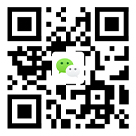Research on Laser Ultrasound for Absolute Acoustic Nonlinear Coefficient Measurement and Adhesive Strength Evaluation
TECLAB Ding Xia shaw * teclab.cn
Summary:This article introduces a non-contact detection method based on laser ultrasound for absolute acoustic nonlinear parameter measurement and evaluation of aluminum alloy plate bonding strength. By measuring the acoustic nonlinearity coefficients of copper and 6061 aluminum and comparing them with contact piezoelectric ultrasonic measurements, the results showed good consistency. The adhesive strength of multi-layer bonded aluminum alloy plates was evaluated using the excitation of Lamb waves by laser ultrasound, and the feasibility of quantitative evaluation was further explored.
keyword:Laser ultrasonic acoustic nonlinear bonding strength
Background:Non contact ultrasonic non-destructive testing has always been a hot topic in the field of non-destructive testing research, and is highly regarded in many specific testing scenarios due to its non-contact and coupling free characteristics. The main technical methods of non-contact ultrasound include electromagnetic ultrasound, air coupled ultrasound, and laser ultrasound. Laser ultrasound has always held a place in the aerospace, military, and special inspection industries due to its large detection distance, high and wide detection frequency, and multiple waveform mode excitations.
Experiment 1: Measurement of Acoustic Nonlinear Coefficient
Nonlinear ultrasonic testing is an innovative technique for evaluating early micro damage in materials. Many literature have applied this technique to evaluate material thermal aging, fatigue damage, microcracks, etc. Unlike traditional linear ultrasound, which uses sound velocity and attenuation, nonlinear ultrasound technology is more effective in characterizing the microstructure of materials by measuring their acoustic nonlinearity coefficients, such as grain boundary determination, second phase precipitation, and inclusion and dislocation density.
The acoustic relative nonlinearity coefficient of traditional nonlinear ultrasound measurement is calculated by measuring the amplitude of the signal received by the ultrasound probe as an indicator, but the relative coefficient is limited to the relative comparison before and after material damage. To solve this problem, this article uses measuring the displacement amplitude caused by sound waves as an indicator to calculate the absolute coefficient. The absolute acoustic nonlinear coefficient can be used for quantitative evaluation of material microstructure parameters and micro damage, and is a potential technique for quantitative non-destructive evaluation.
The nonlinear coefficient is directly related to the second-order nonlinear elastic constant of the material. When a plane longitudinal wave propagates in an isotropic medium, the nonlinear coefficient β can be defined as:

Here, A1And A2It is the displacement amplitude of the fundamental frequency wave and harmonics. K is the wave number, XuFor the propagation distance of ultrasound.
This experiment uses a TWM based photorefractive interferometry method to measure the displacement amplitude of the sample. After analysis and calculation, the minimum detectable displacement amplitude of the device is about 0.01 nm

Figure 1. Schematic diagram of laser receiver

Figure 2. Physical image of LUS Discovery laser receiver

Figure 3. Parameters of Copper and 6061 Aluminum Samples

Figure 4. Schematic diagram of experimental setup

Figure 5. Displacement amplitude frequency spectra of two materials

A12(nm2)
Figure 6. Absolute Nonlinear Acoustic Coefficient (Slope) Analysis of Two Materials

Figure 7. Comparison Table of Acoustic Nonlinear Coefficients Measured by Laser Ultrasonic Method and Piezoelectric Contact Method
Experiment 2: Study on Adhesive Strength Evaluation
The reflection or transmission method based on body waves is often only used for void or complete debonding detection due to its high sensitivity under high acoustic impedance mismatch at the interface, and is an imperfect evaluation method. This article uses the zero group velocity modal attenuation and frequency quantitative analysis based on Lamb waves to study the adhesive strength between aluminum plates. Five aluminum alloy adhesive plates with different mechanical strengths (aluminum alloy plate adhesive aluminum alloy plate) were measured in total

Figure 8. Schematic diagram for testing the bonding structure of 1.5mm aluminum plate -150mm adhesive -3mm aluminum plate
|
|
Sample name |
Al1 glue - Al2mm |
Curing time hours |
Curing temperature ℃ |
Location of release agent |
|
1 |
Al1 |
1.5 |
- |
- |
- |
|
22 |
C50% |
1.5-0.15-3 |
1.5 |
125 |
- |
|
3 |
RA1 |
1.5-0.15-3 |
3 |
150 |
Al1 adhesive |
|
4 |
RA2 |
1.5-0.15-3 |
3 |
150 |
Gel-Al2 |
|
5 |
RA1-2 |
1.5-0.15-3 |
3 |
150 |
Al1-glue-Al2 |
|
6 |
Norm |
1.5-0.15-3 |
3 |
150 |
- |
Figure 9. Six samples (1. Single layer 1.5 mml aluminum plate; 2. Half curing time; 3. Release agent between the first layer of aluminum plate and adhesive; 4 There is a release agent between the second layer of aluminum plate and the adhesive; 5. There is a release agent between the two layers of aluminum plates and the adhesive; 6. Normal bonding and curing

Figure 10. Comparison of resonance frequency intensity of Lamb waves obtained from various samples around 2MHz

Figure 11. Comparison of signal attenuation for six samples
summary:
LUS laser ultrasonic testing has higher reliability and stability when used for absolute nonlinear acoustic parameter measurement, and also has the possibility of quantitatively evaluating micro damage and microstructure. In the application of adhesive strength evaluation, we also explore the feasibility of using this technology for quantitative evaluation of adhesive strength.
reference:
Nondestructive evaluation of structural adhesive bonding using the attenuation of zero-group-velocity Lamb modes,Applied Physics Letters,
doi:10.1063/1.5143215
Measurement of Absolute Acoustic Nonlinearity ParameterUsingLaser-Ultrasonic Detection,applied sciences, doi.org/10.3390/app11094175





